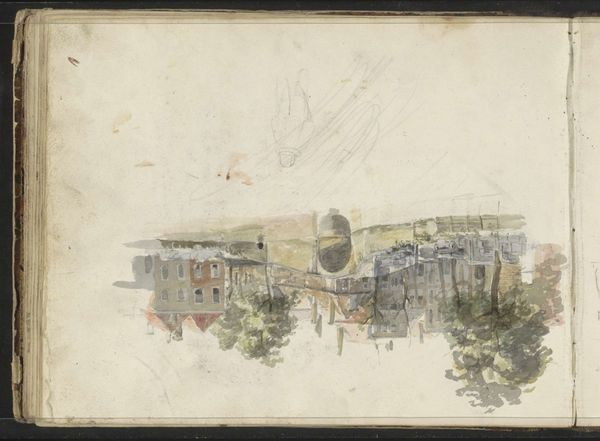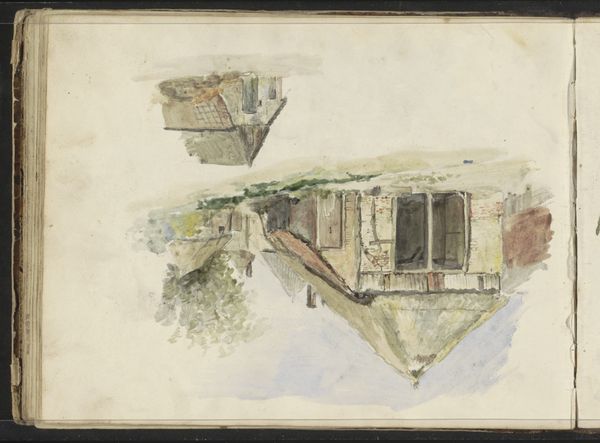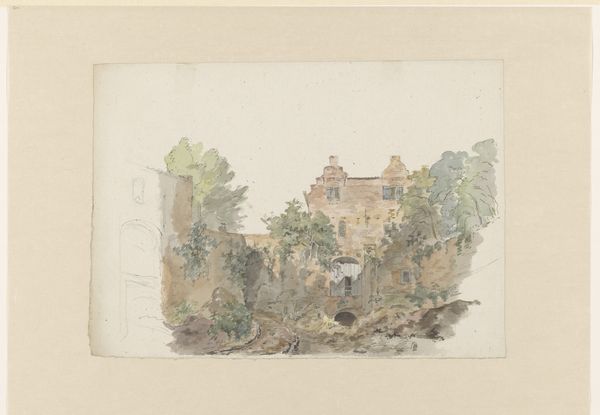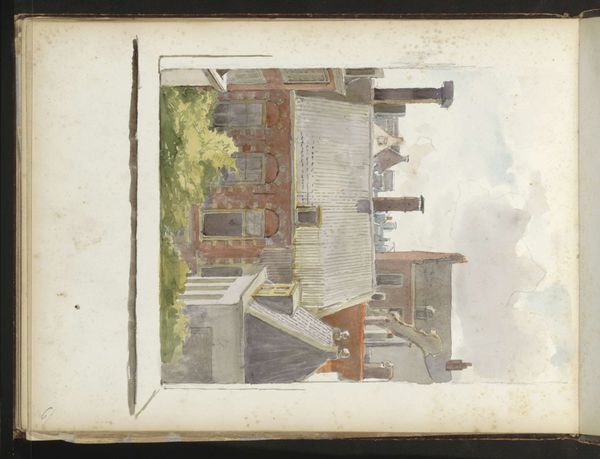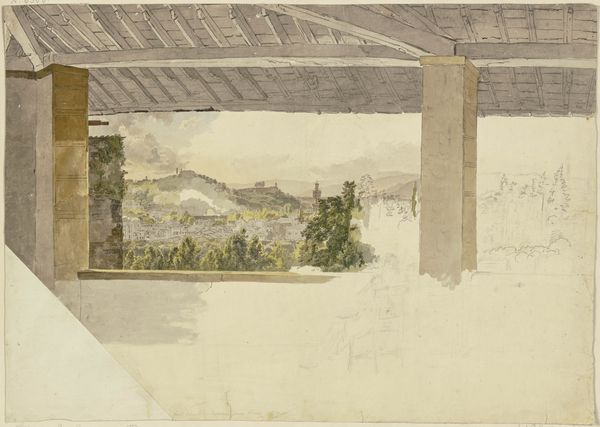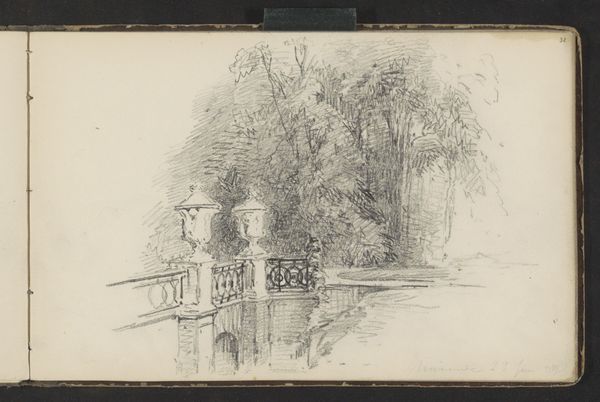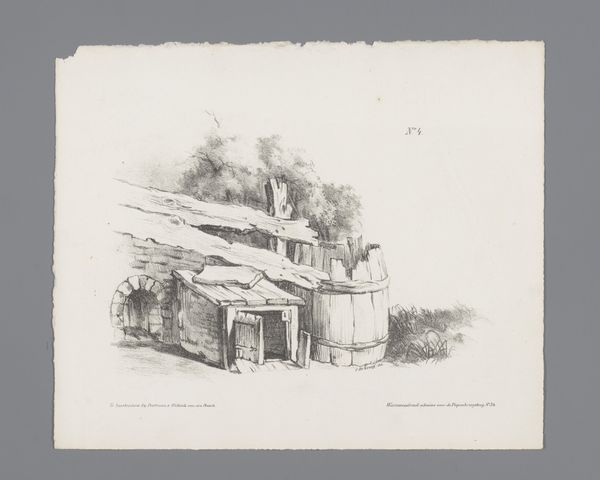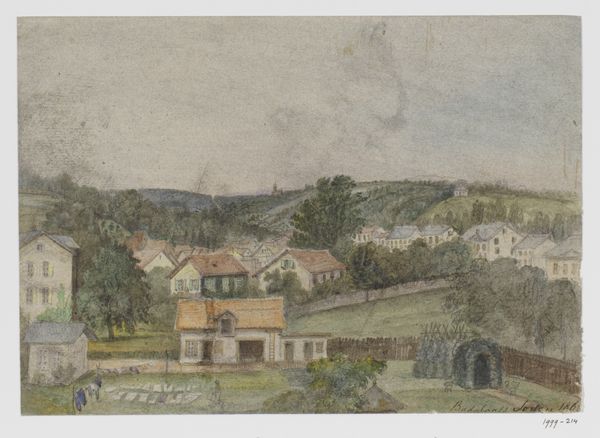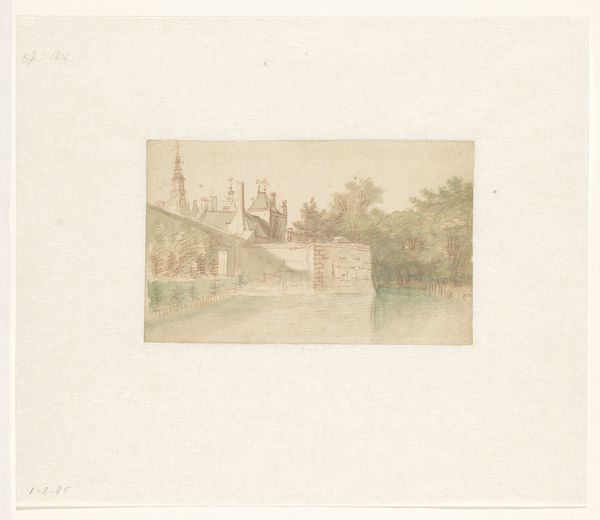
drawing, watercolor
#
drawing
#
water colours
#
landscape
#
watercolor
#
coloured pencil
#
cityscape
#
mixed medium
#
mixed media
#
realism
Copyright: Rijks Museum: Open Domain
Curator: Willem Troost created this cityscape, "Huizen aan een kade," sometime between 1822 and 1893. It’s currently held at the Rijksmuseum. I find it incredibly evocative. Editor: My first impression is the softness, the subdued palette. It feels dreamlike, almost a memory fading at the edges. You can almost feel the grain of the paper and texture of the colors within. Curator: Absolutely. It’s a mixed medium work, using watercolor, colored pencil, and other drawing materials, reflecting the artist's keen interest in accurately capturing the world around him through direct observation and informal recording of scenery and architecture, characteristic of the realism movement. This, of course, happened at a time of intense industrial expansion and social upheaval across Europe. Editor: That resonates when you consider the use of watercolor; its portability made it ideal for documenting landscapes as they rapidly changed during that period. Troost could easily set up his materials along the kade to catch how the evolving architecture shaped daily life and the labor that constituted it. I’m particularly drawn to the faint layering; it shows how the image gradually materializes. Curator: Precisely, Willem Troost occupied a unique position within the artistic landscape, navigating the societal shifts and emerging artistic trends. His work became a visual record of how daily existence evolved. There is a striking element within the context that it represents—documenting the urbanization, while reflecting on human scale amid such transformative societal progression. Editor: You’re right. It encourages one to contemplate labor and lifestyle. In my mind, its power resides in the image being suggestive rather than prescriptive. It enables a powerful bridge to be gapped between observer, artifact and context of the period of material production. Curator: Indeed, the image encapsulates a transient period, inviting reflection on the trajectory of urban existence and the role of documentation amidst societal transformation. Thank you for your perspective! Editor: Thanks for elucidating the rich history behind it!
Comments
No comments
Be the first to comment and join the conversation on the ultimate creative platform.
